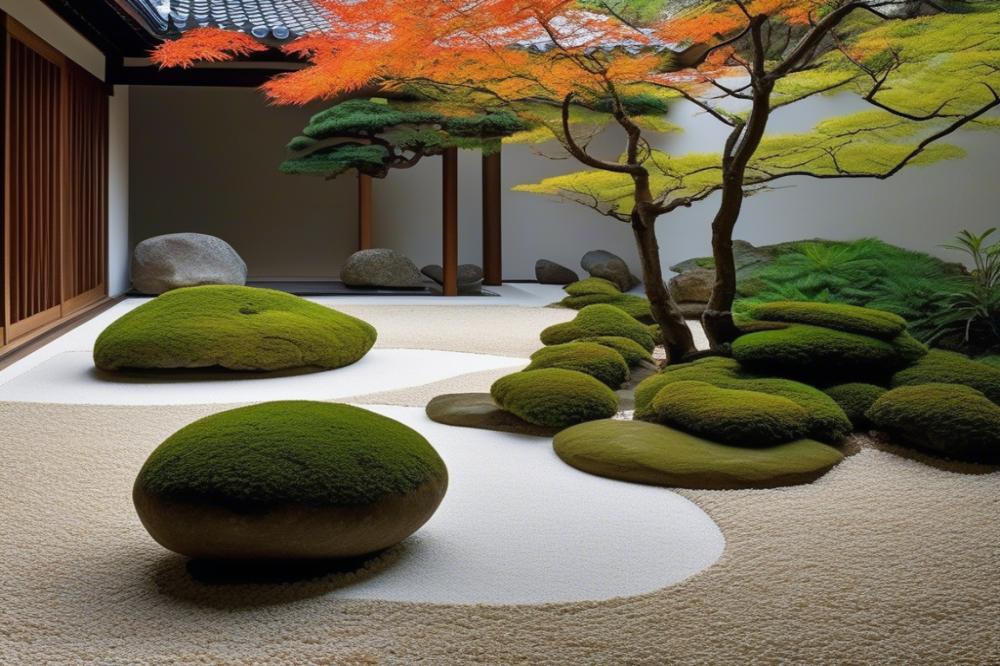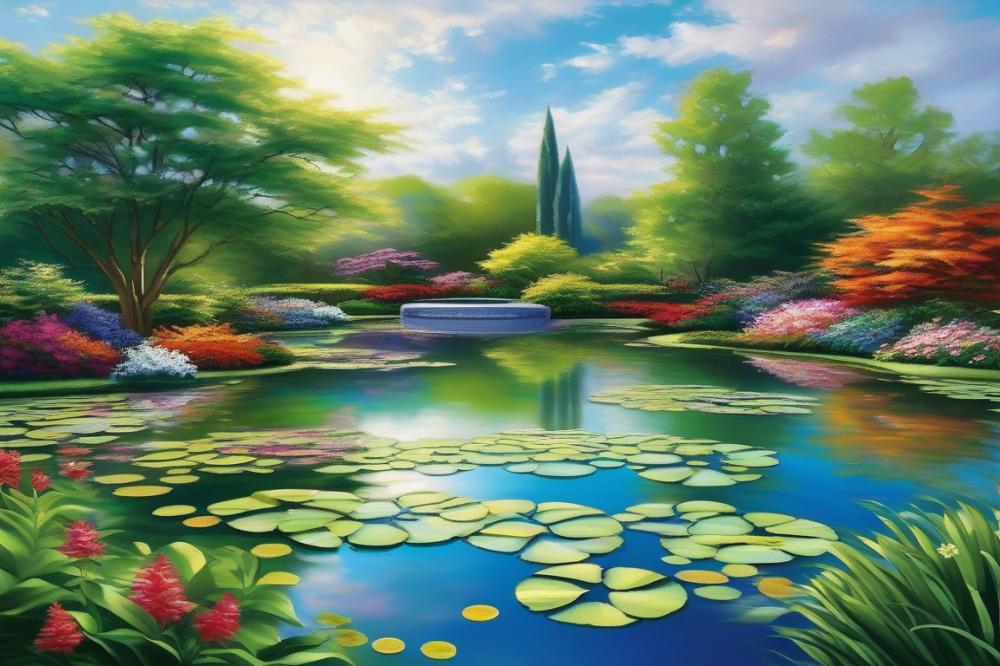Creating Your Peaceful Retreat
Japanese rock gardens, also known as zen gardens, hold a special place in both Japanese culture and Zen philosophy. These spaces are not merely about aesthetic beauty; they embody a deeper significance, offering a pathway to meditation and reflection. By combining elements like gravel, stones, moss, and sand, these gardens promote a sense of peace and serenity. They are designed as living masterpieces, inviting tranquility into our busy lives.
The process of gardening goes beyond planting and landscaping. It’s an invitation to cultivate mindfulness and balance. Engaging with nature allows us to slow down and appreciate the smaller moments of life. Your space can become a personal oasis, where you find comfort away from the chaos of daily routines. As you create your own unique retreat, the focus on harmony will deepen your connection with the environment.
The aim of this article is simple. We want to guide you through each step of creating a Japanese rock garden at home. You’ll learn how to incorporate elements like stones, water features, and plants into your design. Mastering these basics can transform an ordinary space into a mindful escape. Whether you have a large yard or a tiny balcony, anyone can benefit from a touch of serenity. Let’s begin this journey together!
Understanding Japanese Rock Gardens
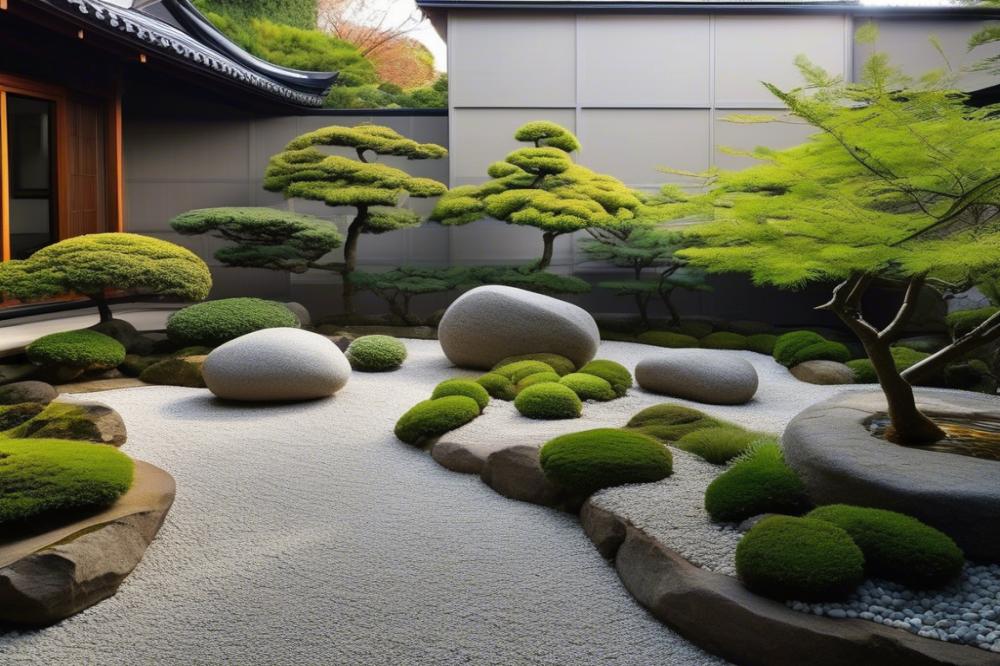

Definition and Purpose of a Japanese Rock Garden
A Japanese rock garden is a minimalist style of landscaping that focuses on stone, gravel, and sand. It is designed to inspire tranquility and reflection. These gardens serve as a peaceful retreat, promoting meditation and a connection with nature. Visitors often find solace in their simplicity, allowing thoughts to flow freely. The beauty lies in their calm aesthetic and a sense of balance.
Historical Context and Evolution of Japanese and zen gardens
Zen gardens have deep roots in Japan’s history. Initially, they were designed for Zen Buddhist monks as spaces for meditation. Over time, these gardens evolved, incorporating elements from traditional Japanese landscapes. The influence of Chinese design is also notable. Rich in symbolism, each aspect of the garden tells a story. As centuries passed, these spaces became more accessible, finding homes in private gardens and public parks alike.
Key Elements: Gravel, Stones, Sand, and Their Symbolic Meanings
Gravel often represents water. Raked patterns in the gravel mimic waves, creating a dynamic visual effect. Stones are essential too; they symbolize mountains and islands. Moss can add softness and lushness, enhancing the overall appeal. Sand offers a blank canvas, often serving as a base for the garden’s layout. Water features may also be included, echoing the importance of water in nature. Plants, while minimal, contribute to the environment’s charm. When designing, each component works together to foster a sense of tranquility. The careful arrangement of these elements invites mindfulness and peace, making gardening a truly meditative practice.
Planning Your Japanese Rock Garden


Choosing the right spot for your garden is the first step. Aim for a location that gets ample sunlight and has a good view from your home. Size matters too. A smaller area may feel more intimate, while a larger space offers more opportunities for creativity. Think about how much room you want to dedicate to this project.
Designing your garden involves more than just placement. Asymmetry plays a vital role in creating an authentic feel. Unlike traditional gardens which may strive for perfect symmetry, a Japanese rock garden thrives on natural imbalance. It reflects the beauty found in nature. Balance can still be achieved through careful selection of stones, plants, and other elements. Use larger rocks to create focal points, while surrounding them with smaller stones or gravel.
Water Features
If you desire an extra touch, consider incorporating water features into your design. The sound of running water adds an element of tranquility. You could use a small pond, a fountain, or even a simple stream. All these help create a serene atmosphere, inviting relaxation. Plants like moss can enhance this peaceful vibe when placed around the water. Additionally, the interplay of sand and gravel near water can mimic natural rivers and shorelines.
Overall, your Japanese rock garden should reflect both your style and love for nature. Think carefully about every piece you add, from the grains of sand to the stones and plants. Each element contributes to the mood and essence of your space.
Materials Needed for Your Japanese Rock Garden
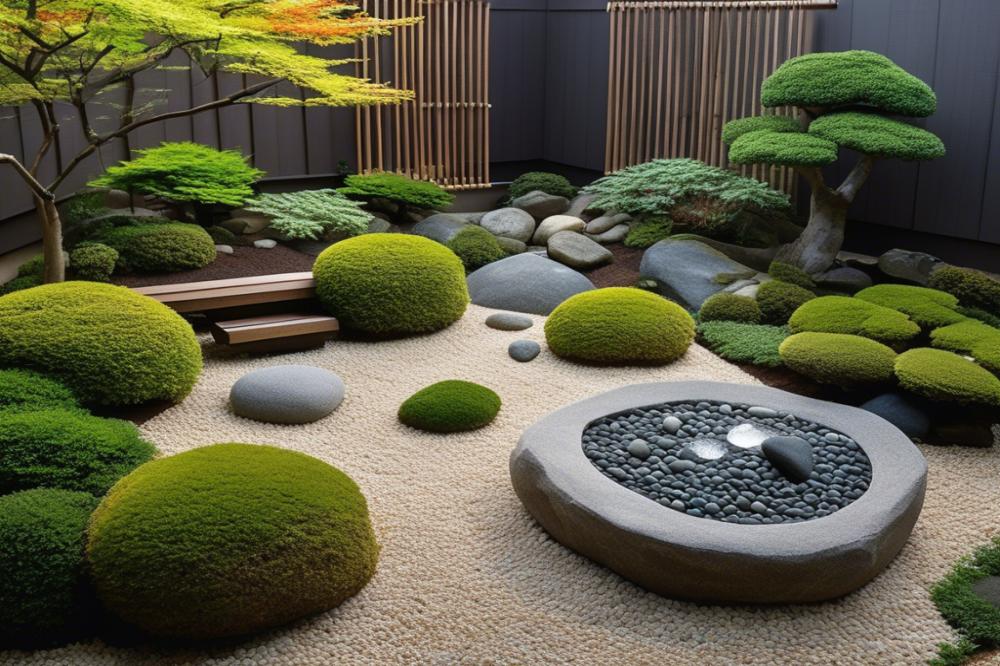

Creating a peaceful rock garden requires careful selection of materials. Start with gravel and sand. The right type can make a significant difference. Choose gravel with a mix of sizes for added texture. Bright white gravel contrasts beautifully with darker stones. Look for sand that complements your color scheme. Fine sand creates a smooth surface, while coarser types can add character.
Selecting Stones and Rocks
Next, consider the stones and rocks to incorporate into your design. Size and shape matter greatly. Larger boulders can serve as focal points. Small stones can fill gaps and create pathways. Placing them randomly looks more natural. Think about the positions that evoke a sense of tranquility. Triangles formed with rocks draw the eye and create balance.
Incorporating Moss and Plants
Moss adds authenticity and a soft touch to your garden. It thrives in shaded areas, making it perfect for those quiet spots. Choose varieties like sheet moss or cushion moss for lovely textures. Plants, too, play a vital role. Select species that grow low to the ground. Sedums and dwarf conifers complement the stones splendidly. If water features are part of your design, consider aquatic plants that enhance the calm atmosphere. Balancing greenery with hardscape elements creates a cohesive look. Don’t forget to let your gardening creativity shine!
Creating the Layout and Design
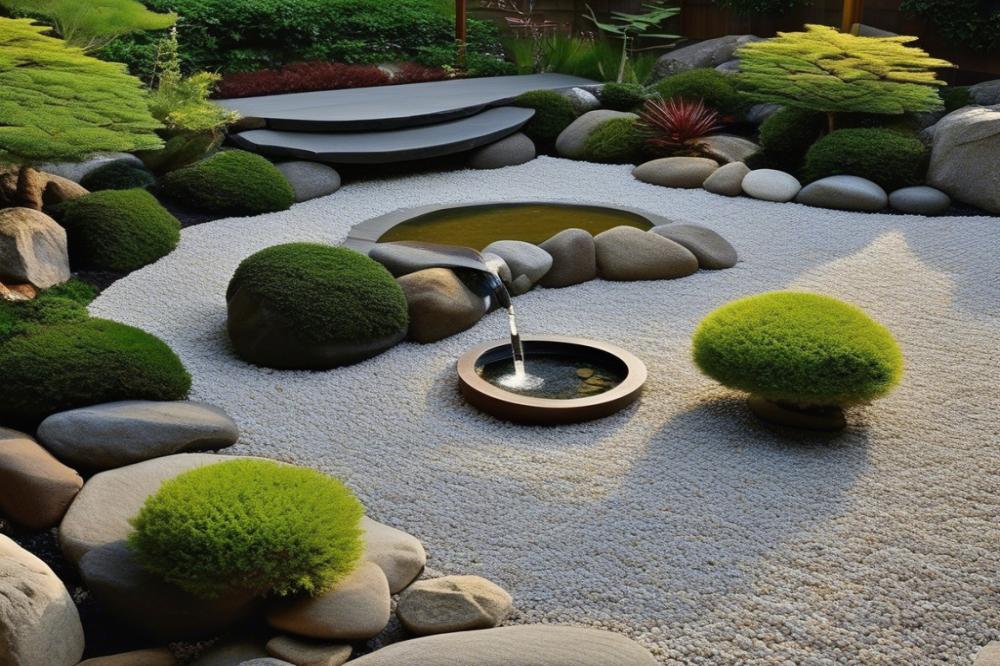

Designing a rock garden can be a rewarding task. Begin by choosing the right location. Consider sunlight, drainage, and space. These factors are important for various elements, including plants and water features.
Start sketching your layout on paper. Visualize where you’ll place stones, gravel, and any plants. Create areas for walking or viewing the garden. Think about how each part connects to bring harmony to the overall design.
When arranging stones, aim for balance. Choose large stones as focal points. Position smaller stones around them to support their presence. Each stone should feel intentional, not random. Vary the sizes to create visual interest. A mix of shapes adds character to your space.
Gravel is a lovely choice for ground cover. Spread it widely to form paths and define areas. Rake patterns into the gravel for texture. This simple step can enhance the garden’s aesthetic. Sand can also be a great alternative for certain sections.
Moss can introduce a soft touch. It thrives in shaded areas, so consider its placement. Plants should be selected carefully. Choose varieties that fit into the theme you are creating. Low-maintenance options can be particularly appealing.
Water features offer another layer of tranquility. A small pond or fountain can create soothing sounds. Position it where you can enjoy its beauty. Surrounding it with stones and plants can further enhance its effect.
Use design elements that foster calmness. Paths should guide you through the space. Lay stones with enough room between them for easy walking. These details contribute to an inviting atmosphere.
Finally, step back and assess your garden as you move along. Adjust elements as needed. Gardening is an evolving art. Each change can lead to new exciting discoveries. Allow your creativity to flow as you refine your unique rock garden.
Maintaining Your Japanese Rock Garden
Keeping your garden looking good is crucial. Regular raking of gravel is one of the simplest tasks. This helps to create clean lines and enhances the design. Use a bamboo rake to make gentle strokes. This adds a traditional touch while fostering a sense of tranquility.
Pruning is another vital aspect of maintenance. Trim back overgrown plants to keep them healthy and in shape. Doing so allows for better air circulation, which plants appreciate. Moss also needs some attention. Gently lift and reposition moss patches if necessary to keep their lush appearance.
Watering is essential but can be tricky. Over-watering can harm plants, especially delicate moss. Always check if the soil is dry before adding more water. Consistent moisture supports the growth of beautiful plants while maintaining the soft glow of sand and gravel.
Importance of Seasonal Care
Seasonal changes require unique care for various elements. In spring, watch for new growth and nourish your plants. Summer brings heat, so ensure proper hydration. Autumn requires more raking as leaves fall, creating a beautiful yet challenging scene. Winter might see snow. Gently remove any heavy snow from rocks and plants to avoid damage and preserve the design.
Keeping the Design Intact and Evolving
Design is not just about looks—it’s about harmony. As plants grow, some areas may need adjustments. Regularly stepping back to evaluate the layout is important. This perspective can inspire new arrangements or additions. Introduce new stones or water features to refresh the visual flow. Gradual changes keep your garden alive and captivating.
In gardening, evolution is part of the beauty. Every season brings variations in color and texture. Take time to appreciate these changes. They provide a dynamic experience. Keeping the garden well-maintained allows it to continue evolving over the years, enhancing your outdoor space.
Embracing Tranquility Through Your Rock Garden
Creating a Japanese rock garden brings numerous benefits to your life. Not only does it enhance the beauty of your outdoor space, but it also offers a peaceful retreat from daily stressors. Imagine stepping into a serene environment where landscaping harmonizes with nature. The carefully arranged stones and soft gravel invite tranquility.
Gardening is a journey of growth, both for the plants and for yourself. As you design and maintain your garden, you may find moments of reflection and mindfulness. Each decision you make, from the placement of rocks to the choice of plants, serves as an opportunity to connect with your surroundings. Embracing this process can lead to a comforting sense of balance in your life.
Personalization is key to making your rock garden truly special. You have the freedom to incorporate elements that resonate with you. Whether you want to add water features, specific plants, or even sculptures, each addition can symbolize your personal journey. Experimenting with different arrangements can lead to surprising discoveries about what brings you the most peace.
In the end, the effort you put into creating a unique space will pay off. A well-crafted rock garden not only beautifies your home but also nurtures your spirit. Dive into this rewarding hobby and allow nature to become part of your daily life.

